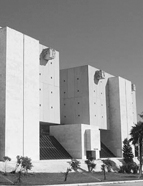

................................
The establishment of the Crown archive in Lisbon during the reign of King Dinis, or more likely King Fernando, does not imply the absence of earlier royal document production or even an archive, albeit an itinerant one accompanying the court on its travels across the kingdom. Indeed, evidence confirms the existence of a comital chancellery during the time of Count Henrique and Countess Teresa (1095–1128), with the royal chancellery’s activities commencing under King Afonso Henriques. The first act by Prince Afonso Henriques dates back to 27 April 1128, confirming the charter of privilege to the city of Guimarães (A. J. Costa, “La Chancellerie royale…”, 1975, p. 147).
The lack of a fixed archive, due to the court’s absence of a stable residence, called for the production of multiple copies of important royal chancellery documents. These copies were deposited in the registries of influential monasteries, such as the Monastery of São Vicente de Fora, the Convent of Costa in Guimarães, the Convent of Santa Cruz in Coimbra, and the Monastery of Alcobaça. In many cases, monastic scribes were involved in drafting these documents (J. P. Ribeiro, Memorias authenticas… , 1819, pp. 5-8, 11-12; J. P. Costa, “O Arquivo Nacional...”, 1994, pp. 97-98; J. Pessanha, “A Torre do...”, 1906, p. 458; P. Azevedo and A. Baião, O Arquivo da Torre... , 1989 [orig. 1905], p. 13).
The royal chancellery rapidly developed a well-organised structure, reflecting a regular pattern of activity. Less than a century after the kingdom's foundation, during the reign of King Afonso II, the first chancellery registry book was created, covering the years 1217–1221 (R. Azevedo, “O Livro de registo…” ["The Registry book"] 1967). This is one of the oldest registry books among European royal chanceries. The registry of documents issued by the royal chancellery can be considered the first tool for accessing information in the Crown archive, allowing retrospective research to locate and identify documents issued by the royal administrative service. Thus, the chancellery itself, as the producer of documentary acts, also served as an archive, as evidenced by its issuance of certificates for the documents it preserved (J. P. Ribeiro, Memorias authenticas… , 1819, p. 12).
This work is financed by national funds through FCT - Foundation for Science and Technology, I.P, in the scope of the projects UIDB/04311/2020 and UIDP/04311/2020.
